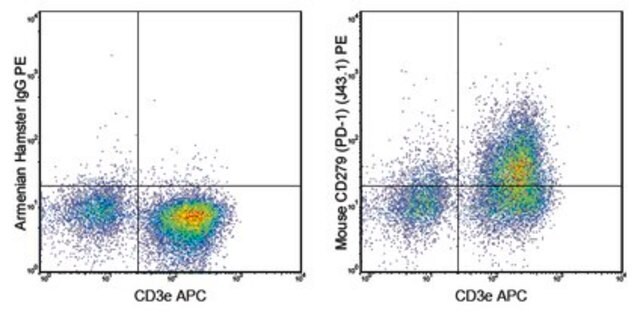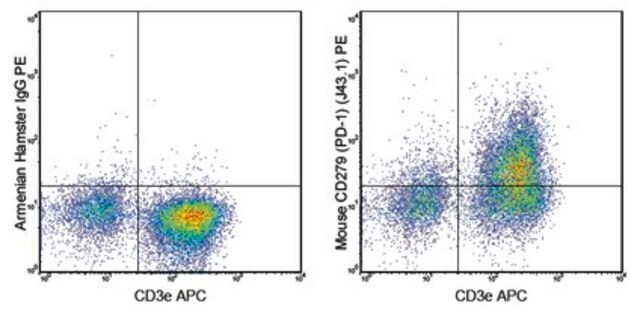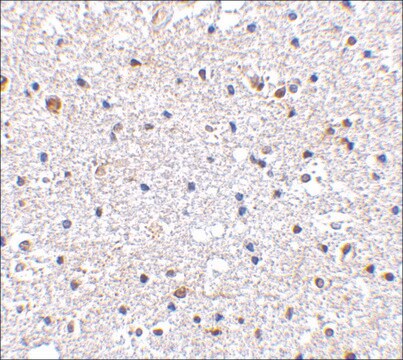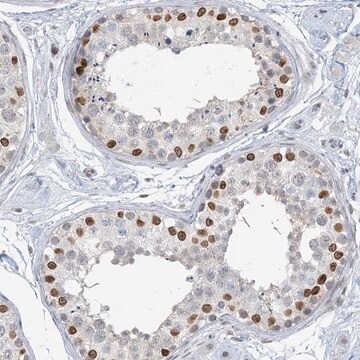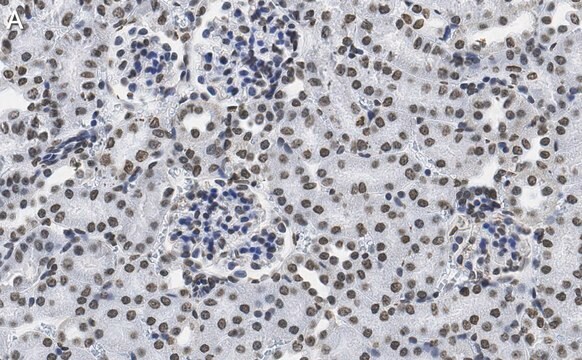MABC1132
Anti-PD-1 Antibody, clone G4
clone G4, from hamster(Armenian)
Sinonimo/i:
Programmed cell death protein 1, Protein PD-1, mPD-1, CD279
About This Item
Prodotti consigliati
Origine biologica
hamster (Armenian)
Forma dell’anticorpo
purified immunoglobulin
Tipo di anticorpo
primary antibodies
Clone
G4, monoclonal
Reattività contro le specie
mouse
Confezionamento
antibody small pack of 25 μg
tecniche
flow cytometry: suitable
N° accesso NCBI
N° accesso UniProt
modifica post-traduzionali bersaglio
unmodified
Informazioni sul gene
mouse ... Pdcd1(18566)
Descrizione generale
Specificità
Immunogeno
Applicazioni
Flow Cytometry Analysis: A representative lot detected PD-1 in Flow Cytometry applications (Hirano, F., et. al. (2005). Cancer Res. 65(3):1089-96).
Qualità
Flow Cytometry Analysis: 1 µg of this antibody detected PD-1 in 1X10E6 EL4 T lymphoma cells.
Descrizione del bersaglio
Stato fisico
Altre note
Non trovi il prodotto giusto?
Prova il nostro Motore di ricerca dei prodotti.
Certificati d'analisi (COA)
Cerca il Certificati d'analisi (COA) digitando il numero di lotto/batch corrispondente. I numeri di lotto o di batch sono stampati sull'etichetta dei prodotti dopo la parola ‘Lotto’ o ‘Batch’.
Possiedi già questo prodotto?
I documenti relativi ai prodotti acquistati recentemente sono disponibili nell’Archivio dei documenti.
Il team dei nostri ricercatori vanta grande esperienza in tutte le aree della ricerca quali Life Science, scienza dei materiali, sintesi chimica, cromatografia, discipline analitiche, ecc..
Contatta l'Assistenza Tecnica.